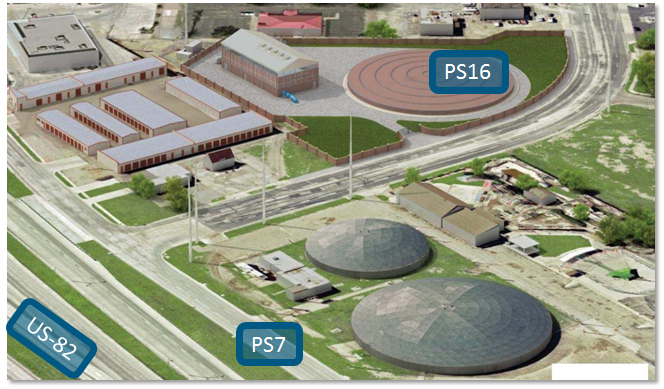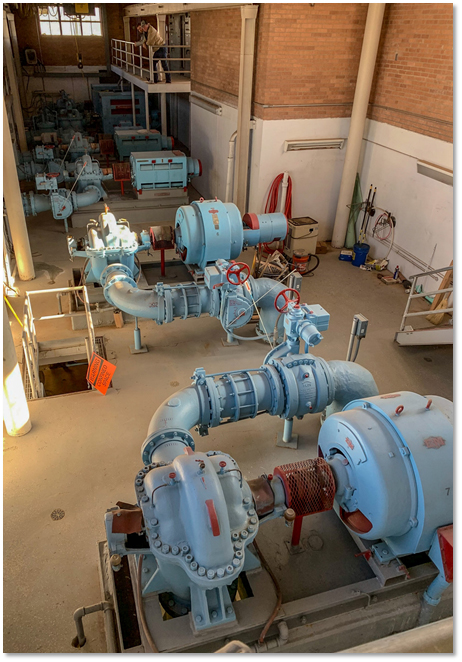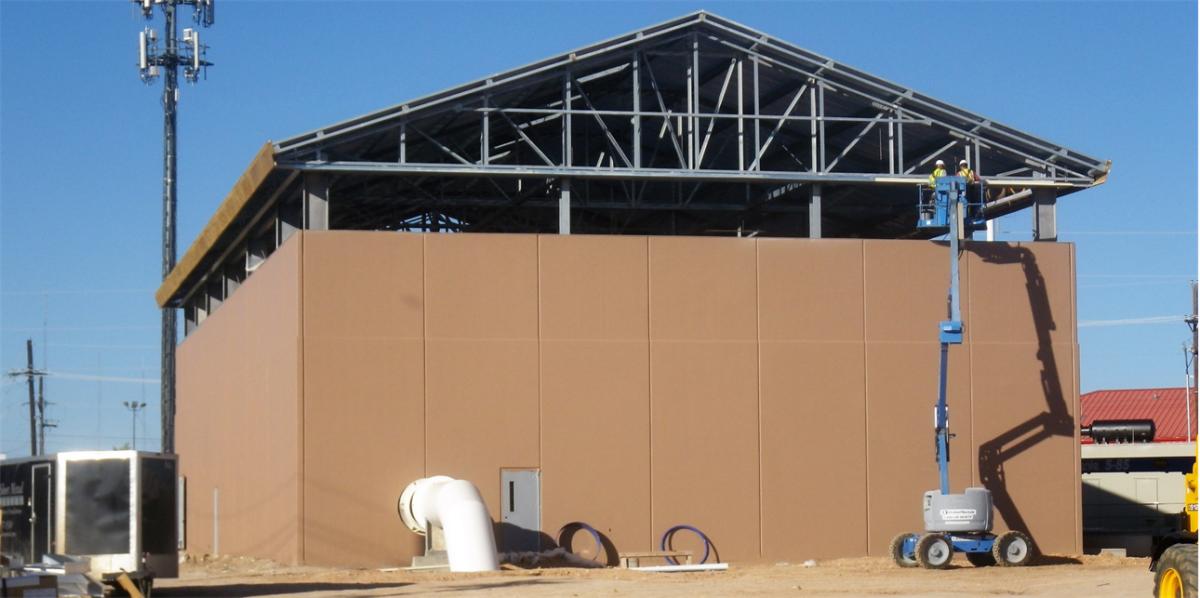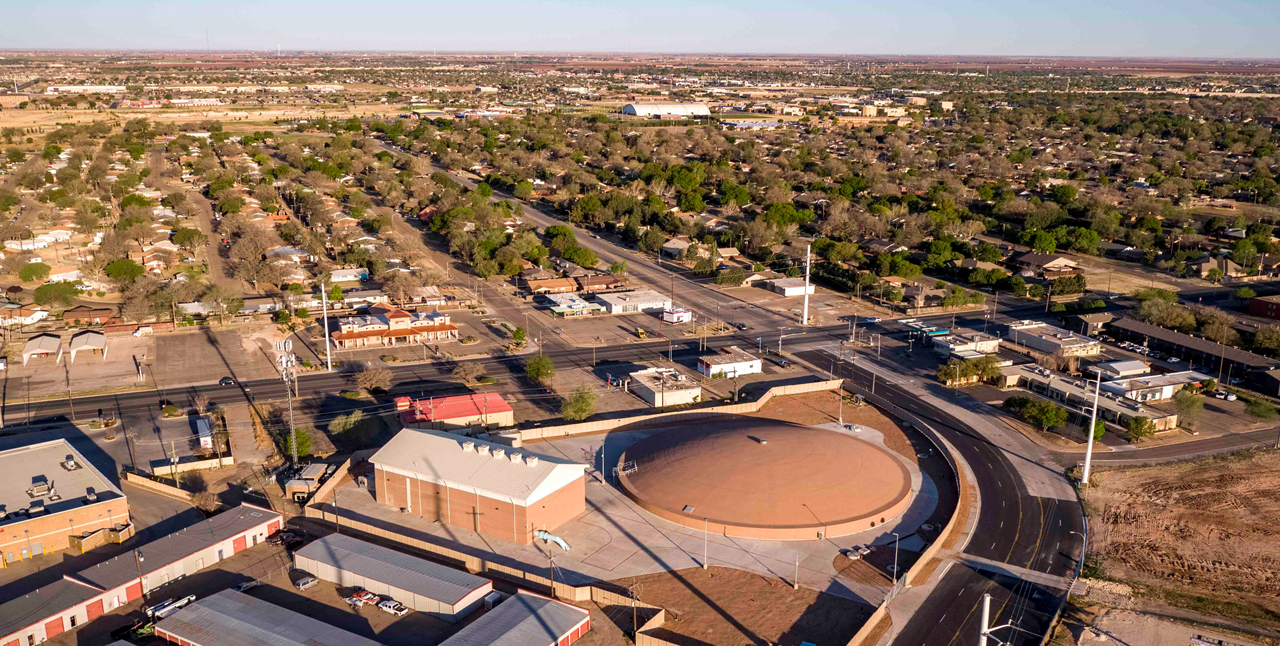Performing Open-Heart Surgery On a Water System’s Primary Pump Station
(All Images Courtesy of the City of Lubbock)
In the same way a physician meticulously performs open-heart surgery, cities have to modify their water system while it’s still running. But with flexible design and careful attention during construction, the transition to a new “heart” can go seamlessly without disruption of service.
 A condition assessment showed the City of Lubbock needed to replace their 61- year-old Pump Station No. 7 (PS7). Known as the water distribution system’s “heartbeat,” PS7 had a firm capacity of 53.3 million gallons per day (MGD) and seven million gallons of water storage on-site in ground storage tanks, pumping more water and serving more people than any pump station in the system. To continue serving the system and replace PS7, the City chose to build Pump Station No. 16 (P16) and an eight-million-gallon ground storage tank in a vacant lot across the street.
A condition assessment showed the City of Lubbock needed to replace their 61- year-old Pump Station No. 7 (PS7). Known as the water distribution system’s “heartbeat,” PS7 had a firm capacity of 53.3 million gallons per day (MGD) and seven million gallons of water storage on-site in ground storage tanks, pumping more water and serving more people than any pump station in the system. To continue serving the system and replace PS7, the City chose to build Pump Station No. 16 (P16) and an eight-million-gallon ground storage tank in a vacant lot across the street.
Design
During design, special consideration was given to operational flexibility, reliability, and security. Future capital improvement projects, including five elevated storage tanks, would impact PS16’s operations over its design life. A Freese and Nichols team performed water distribution system modeling and master planning for the City. The master plan utilized the City’s latest GIS and as-built drawings for facilities to construct and calibrate the City’s hydraulic water model.
The City’s hydraulic model was consulted during design to analyze both current and future system conditions (demands and pressures). PS16s design need to be flexible enough to meet a range of system condition, and reliable enough to operate well over those varying conditions.
The Future in Mind: With the future system modifications in mind, variable frequency drives (VFDs) and empty pump bays were included to allow operational flexibility and room for additional pumping capacity. The electrical room was sized to accommodate future installation of two more VFDs, when the empty pump bays were filled. Pairing the pumps with VFDs allows the City to meet variable system demands (current, future, average day, peak hour, tank levels high, tank levels low) efficiently.
 Size Matters: Maximizing the tank storage at this site was critical because the high flow rate reduced the response time to changes in the system. The pressure in the supply pipeline and the size of the site posed challenges to making the tank large enough. Our engineers drew upon their construction management experience to propose partially burying the tank and building it before the pump station to efficiently lay-out the site and still meet the proposed schedule.
Size Matters: Maximizing the tank storage at this site was critical because the high flow rate reduced the response time to changes in the system. The pressure in the supply pipeline and the size of the site posed challenges to making the tank large enough. Our engineers drew upon their construction management experience to propose partially burying the tank and building it before the pump station to efficiently lay-out the site and still meet the proposed schedule.
Increased Security: Due to PS16’s crucial role in the City’s system, security was very important to the City. Motion sensing cameras, key card access, and a pre-cast concrete panel perimeter fence were included for security, and let the neighboring community know that their City took pride in their water’s safety. PS16 was designed to be a robust heart for the City’s distribution system for years to come, even through a time of many system modifications.
Important Aesthetics: The size and location of the building required to house the PS16 pumps and associated equipment meant that this project would draw attention. The site is not only highly visible from the Freeway but is also adjacent to an amusement park. The importance of the pump station along with the high visibility of the site warranted the attention of City officials and the public. Architectural renderings proved to be a valuable design tool, helping make decisions and build consensus. The renderings also proved to be a valuable construction tool. The construction trailer featured massive prints of the renderings hanging on the walls, aiding the construction manager in determining whether architectural samples submitted during construction matched with the City’s vision for the station.
Construction
Careful attention to the yard piping design and a detailed construction sequencing plan allowed PS7 to remain in service for the entirety of PS16’s construction.
Valuable Experience: Freese and Nichols provided construction management and inspection. The construction representative had many years of pump station construction experience and helped the City get the product that had been designed for them.
On-Site Monitoring: Much of the construction associated with PS16, including yard piping, deep building foundation design, and pump cans, are installed below the ground surface and somewhat difficult to problem shoot. Having the reps on site monitoring construction, from the deep and buried items to the shiny above grade piping inside the pump room, was just one more step the City took to build in reliability to PS16.
Conclusion
PS16 construction was operational in the fall of 2017. Special consideration during planning and design to operational flexibility, reliability and security set the Lubbock water system’s “heartbeat” up for a long and happy life.



